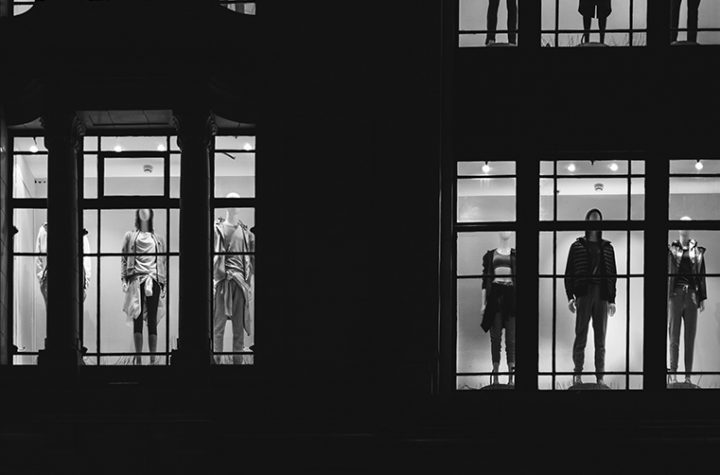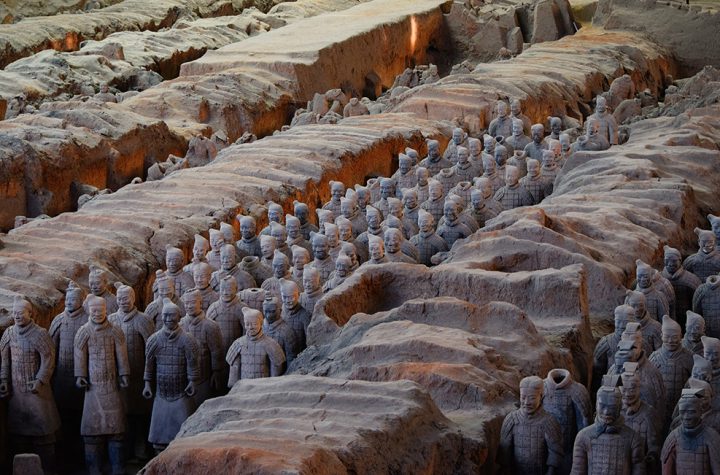
In the months after the University of Rochester abruptly closed its campus in March due to COVID-19, Yacine Sawadogo and a small group of other international students unexpectedly found themselves with the run of the school.
All the domestic students had gone home; they were the only ones remaining. They organized soccer games, played video games and watched movies together.
“We felt like we owned the place,” said Sawadogo, a sophomore from Burkina Faso in West Africa. “It was a little lonely, actually.”
For that reason, he smiled to see the steady procession of luggage racks rolling into Susan B. Anthony residence hall this month. The mad dash of a typical moving-in day had been replaced with a series of time trials, with arriving students given one hour to unload their belongings.
“Now it’s getting a little crowded again,” he said. “It’s great to see new faces.”
For colleges and universities across the country, the challenges related to international students — helping them obtain visas, enter the country and, if necessary, leave it again — are among the most complicated in an already difficult task.
The federal government has not helped, issuing confusing and sometimes contradictory guidance on students’ rights to travel and study in the United States during the pandemic.
An estimated 1.1 million international students attend college in the United States each year, according to the Institute for International Education, about 6% of all students in higher education.
The proportion is much larger at research institutions such as the University of Rochester, where about a third of undergraduate and graduate students come from China, India, South Korea and other places around the world.
Those countries, too, have their own regulations to be followed, further complicating the process for American schools trying to welcome students from abroad.
“What applies to one student doesn’t apply to another,” said Ravi Shankar, assistant vice provost and director of the International Services Office at UR.
“It’s so contextual and so dependent on an individual student’s circumstances.”
Trump administration order sows fear
The school year for countless international students nearly ended before it even began this summer after President Donald Trump’s administration announced their visas would be revoked if their schools did not offer at least some in-person learning.
Your browser does not support the video tag.
Lea Thome, Junior & International student at the University of Rochester
“If they’re not going to be a student or they’re going to be 100 percent online, then they don’t have a basis to be here,” said Ken Cuccinelli, acting deputy secretary for the Department of Homeland Security.
Leading private universities, many of them increasingly dependent on international students for revenue, protested the decision as misguided and contrary to public health concerns.
Lea Thome, a junior political science major from Germany and president of the University of Rochester’s Undergraduate Political Science and International Relations Council, created an online petition protesting the policy. Within days, it exceeded 440,000 signatures.
“Many international students come to the United States for the opportunities, resources, financial aid and scholarships that are not accessible to them in their home countries,” she wrote.
“Returning home would force many international students to pause their studies because they might not have access to the resources they need such as the internet, electricity or other.”
The policy was eventually rescinded in the face of a legal challenge, meaning current students could return to the U.S. to finish their classes. New students, such as incoming first-year undergraduates, still are unable to secure visas if their classes are fully online.
Shankar said the lack of clear federal guidance has led to a flurry of wasted energy.
“Most of the battle we’re fighting is with the promulgation of these proclamations that have created a tremendous amount of pressure,” he said. “There is a slight sense now that we may be stabilizing. But you never know what’s going to happen.”
Quarantines, pit stops in other countries
Amid all the institutional rushing about, students like Koko Chaumia, a senior from Malawi, were watching television.
Chaumia stayed in the U.S. after the spring semester but returned to Rochester from a state that necessitated a quarantine.
“It was odd,” she said of her two-week isolation. “I finished all of Netflix.”
Many graduate students who live off campus or work at the University of Rochester Medical Center never left. But there were plenty who did manage to return to their home countries, not to mention incoming first-year students.
The University of Rochester strove to get most of its 4,000 or so international students back on campus early in order to complete 14 days of quarantine before other students arrived.
They were offered free housing on campus if they arrived early enough.
The greatest number of the college’s international students are Chinese, and those coming from China had an especially taxing itinerary.
The U.S. has banned people coming directly from China, so many students spent two weeks in Cambodia or Vietnam before flying to the U.S and quarantining for another two weeks here, Shankar said.
“I can’t even begin to imagine what that would look and feel like and the anxiety and stress levels that would cause,” he said.
“What if they got stuck in Cambodia or Vietnam and couldn’t leave? It’s a testimony to the enormous resilience ex-pat students have in pursuing their goals to get here.”
Many students, particularly from China, have deferred their arrival until the spring.
Beyond the students, the university also must attend to the work visas of its hundreds of international staff and faculty, in particular at the medical center.
“There’s a whole smorgasbord we’ve had to deal with,” Shankar said. “There are no real quiet days for us over here.”
Contributing: Joseph Spector, New York state editor





More Stories
Justice Rajiv Shakdher also asked the media houses AGR Outlier Media Pvt Ltd. and Bennett Coleman and Company Ltd. to ensure that no defamatory content is uploaded on social media platforms or displayed on their channels.
Two people have become the first passengers on a Hyperloop, a technology considered to be the future of high-speed ground transport.